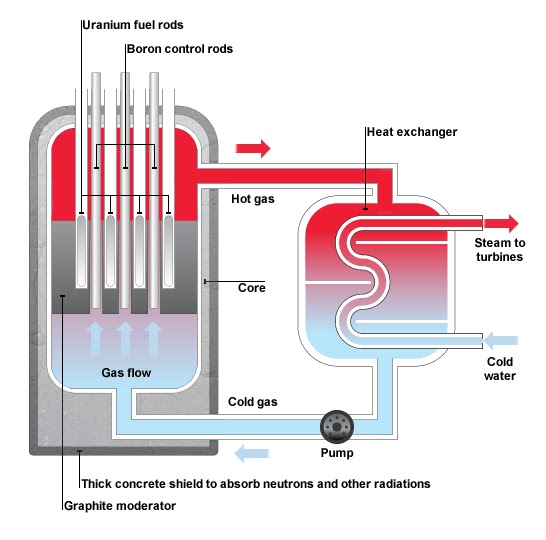In
the never ending quest for cheaper cleaner energy, though much maligned,
nuclear power is the most effective tool we have. In these times of searching
for cheap electricity and alternate sources such as cheap gas nuclear power may
just be the answer. Using just tiny amounts of fuel to produce huge quantities
of energy with virtually no waste product, nuclear power is one of the most
beneficial and yet simultaneously potentially threatening sources of energy
known to man. But why is nuclear power so dangerous – and what are the actual
potential risks attached?
The Discovery of Nuclear Potential
First
let’s take a look at how nuclear power was discovered and how we use it to
generate electricity. Despite what most people believe, nuclear fusion was not
discovered by Albert Einstein, the earliest observation of a nuclear reaction
was made in 1917 by Ernest Rutherford when he managed to transmute nitrogen
into oxygen. Several years later in 1938 the very first artificial nuclear
fission reaction was created by Meitner, Hahn and Frisch who later won a Nobel
Prize. It was only then that we truly realised we had an almost unlimited
source of cheap electricity which could solve the world’s energy problem for
years to come.
How Nuclear Power Stations Generate Electricity
So
now that we know how nuclear power was discovered a more important question
might be, how exactly do we use it to generate the electricity we use in our
everyday lives? The answer is actually surprisingly simple and extremely
similar to the way we get electricity from burning combustibles such as coal
and wood. In traditional power stations we burn fossil fuels and then use the
heat this generates to turn water into steam – this steam is then used to drive
a turbine, which as it spins, creates an electrical charge. This is exactly the
same process which happens in a nuclear power station – the only difference is
that instead of burning flammable materials to turn water to steam, we force a
nuclear reaction which gives off enough heat to turn water to steam. You can
see a great image of how this works as given below.
How Nuclear Reactions Create Energy
But
how is nuclear energy itself created? We hear you cry! Well, this is a little
trickier and none of us here are physicists, but we’ll try to explain it in as
simple terms as possible. The world is made up of several basic parts which we
call elements – these are the essential building blocks that make up all
materials known to man. For example a few of the most famous elements are Gold,
Carbon and Argon, these differ from materials as they cannot be broken down
into smaller parts without affecting their atomic structure… whereas a
material, such as steel, can be heated to a temperature where it splits into
its component parts (elements) which are iron and carbon.
- Still with us? -
Ok –
so now we know what an element is we can finally come to nuclear energy.
Nuclear energy is released when you force an element to change form by
bombarding its atoms with either electrons or neutrons, in this process the
element actually changes form and it is this mechanism which causes a huge
release of energy, known as a nuclear reaction.
Conclusions
So
there you have it, a brief history of how nuclear power stations came about and
how those power stations are used to create a wealth of energy at a time when
cheap gas and electric are of paramount importance to the human race. There are
however, also some great dangers to nuclear power – for example a nuclear
explosion and have great and devastating power as the world was shocked and
appalled to see when the USA dropped to Atomic Bombs in their attack on Japan
during the Second World War. This is also a risk at nuclear power stations as
was illustrated at the Chernobyl site in Russia. The Chernobyl incident killed
many people in the locality and left the area a toxic wasteland which is
avoided by people to this day and will remain so for many many years to come.
A
second factor here is nuclear waste which stays radioactive for hundreds or
even thousands of years. Governments currently have no truly suitable manner
for disposing of radioactive waste other than burying it deep underground –
which of course could eventually leak back into our eco-system. Another option
might be to shoot such waste out into space but we are currently far away from
that prospect both in terms of technology and politics.
It is
important to point out here that thus far there have been very few nuclear
power station explosions or meltdowns, and although the ones that did happen
have had an extreme and adverse effect on local populations nuclear power still
remains the cleanest and most abundant source of energy known to man -
especially if we’re talking about a gas and electricity comparison.
















0 comments:
Post a Comment